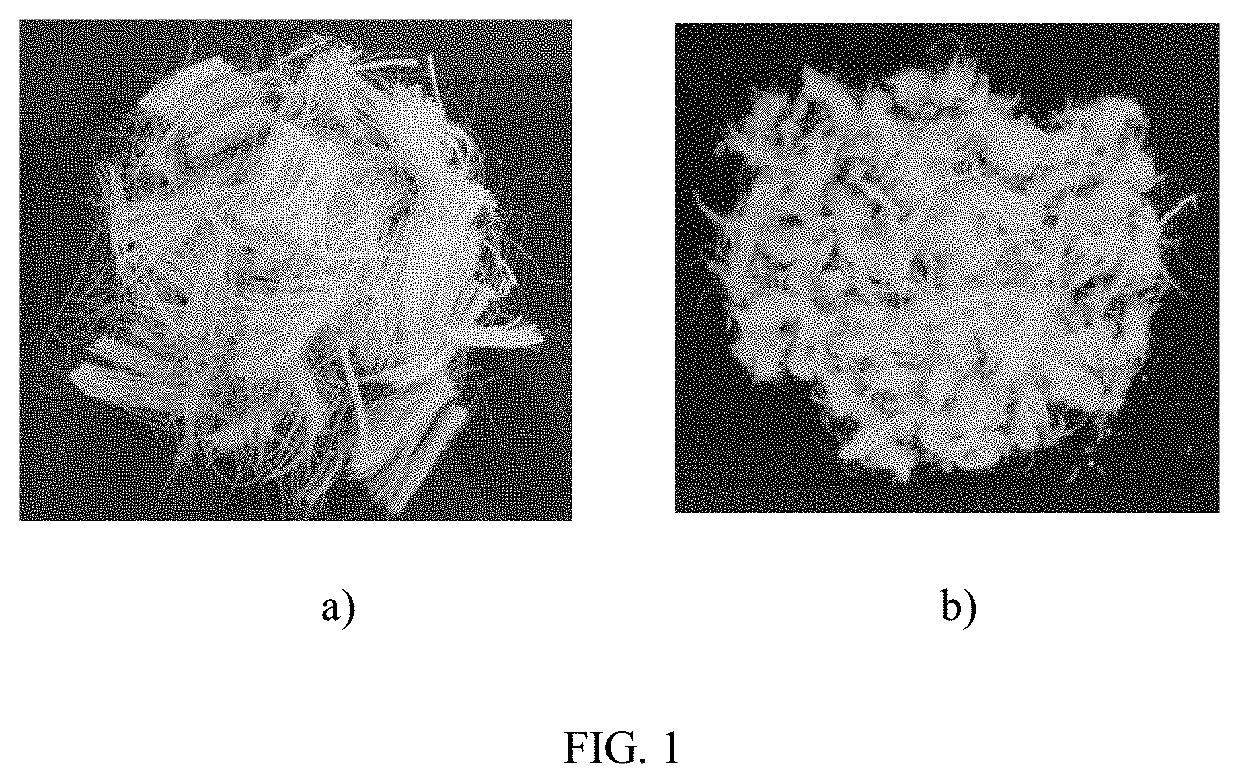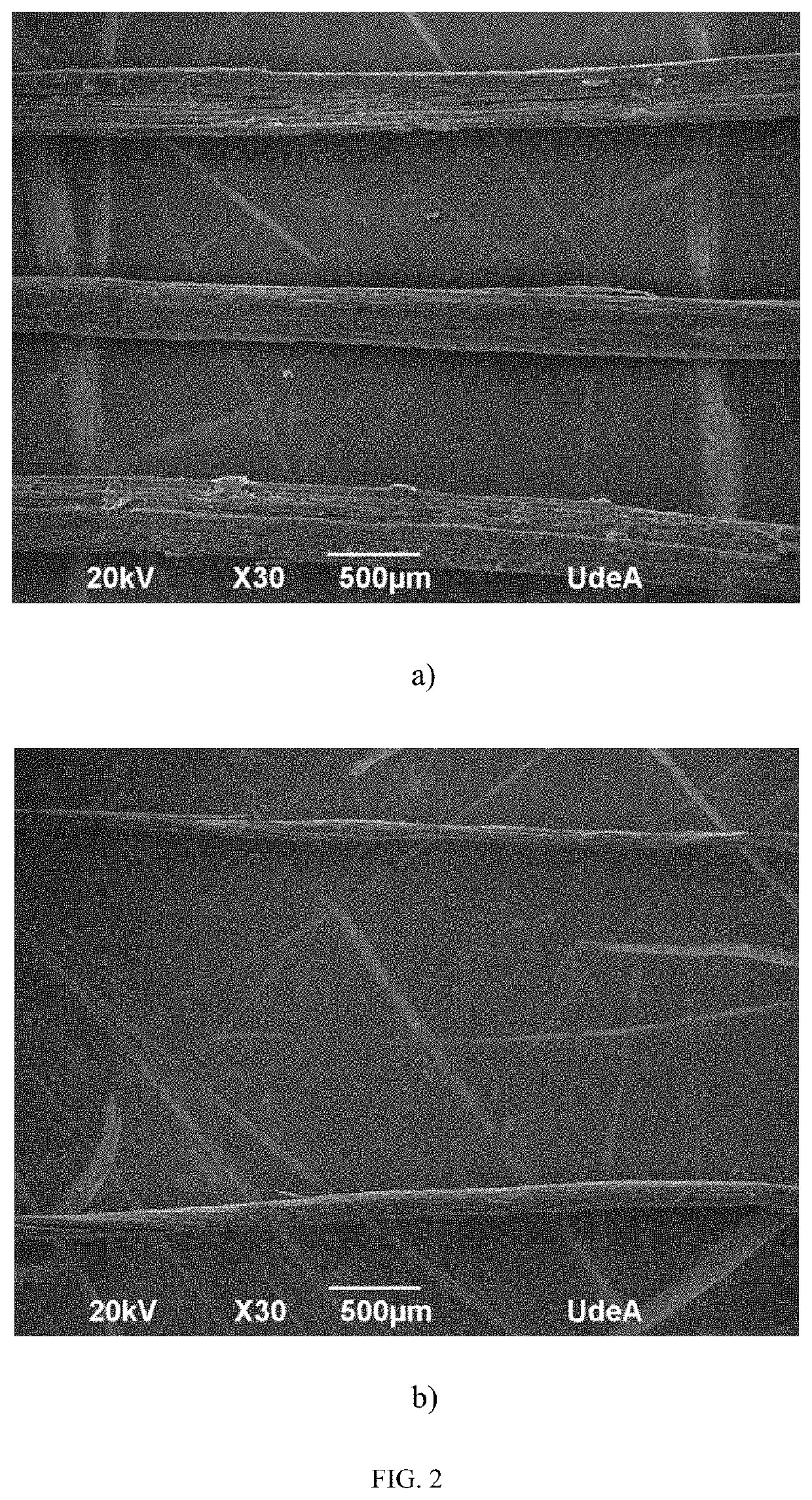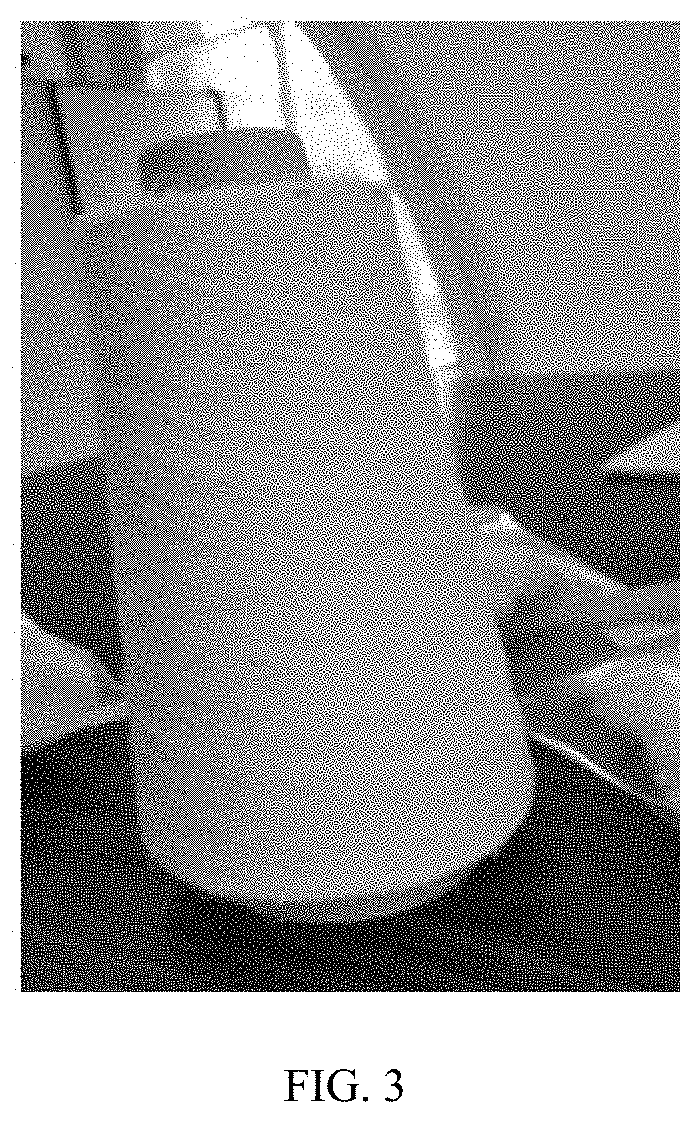Natural fiber treatment process
- Summary
- Abstract
- Description
- Claims
- Application Information
AI Technical Summary
Benefits of technology
Problems solved by technology
Method used
Image
Examples
example 1
of Fique Fibers
[0029]Fique fibers with a length of 35 mm were cut using a guillotine. The fibers were subject to an alkaline process at 80° C. for 2 hours, using a solution of 666.6 g of potassium hydroxide and 3333.3 ml of water.
[0030]Subsequently, the fibers were rinsed and the bleaching phase was carried out, in which 2918 ml of water, 80 g of caustic soda at a concentration of 90%, 2.0 g of magnesium sulfate, 200 g of antifoam (stearic alcohol) and 800 g of hydrogen peroxide in a concentration of 10% (w / w) were added.
[0031]The solution obtained was taken to a temperature of 80° C., kept for one hour and then the fibers were rinsed 3 times by overflow. Finally, the fiber was subject to a softening process, for which a solution was prepared with 3920 ml of water and 80 g of a siliconized nanoemulsion. This solution was taken to a temperature of 60° C. in order to add the fiber and run it through the process for one hour. The resulting cottonized fiber was dried in an oven at 40° C...
example 2
of Fique Fibers
[0032]Fique fibers with a length of 35 mm were cut using a guillotine. The fibers were subject to an alkaline process at 60° C. for 0.5 hours, using a solution of 222.2 g potassium hydroxide and 3777.7 ml water.
[0033]Subsequently, the fibers were rinsed and the bleaching phase was carried out, in which 2918 ml of water, 80 g of caustic soda at a concentration of 90%, 2.0 g of magnesium sulfate, 200 g of antifoam (stearic alcohol) and 800 g of hydrogen peroxide in a concentration of 10% (w / w) were added.
[0034]The solution obtained was taken to a temperature of 80° C., kept for one hour and then the fibers were rinsed 3 times by overflow. Finally, the fiber was subject to a softening process, for which a solution was prepared with 3920 ml of water and 80 g of a siliconized nanoemulsion. This solution was taken to a temperature of 60° C. in order to add the fiber and run it through the process for one hour. The resulting cottonized fiber was dried in an oven at 40° C. fo...
example 3
of Sisal Fibers
[0035]Sisal fibers with a length of 35 mm were cut using a guillotine. The fibers were subject to an alkaline process at 80° C. for 2 hours, for which a solution of 666.6 g of potassium hydroxide and 3333.3 ml of water was used.
[0036]Subsequently, the fibers were rinsed and the bleaching phase was carried out, in which 2918 ml of water, 80 g of caustic soda at a concentration of 90%, 2.0 g of magnesium sulfate, 200 g of antifoam (stearic alcohol) and 800 g of hydrogen peroxide in a concentration of 10% (w / w) were added.
[0037]The solution obtained was taken to a temperature of 80° C., kept for one hour and then the fibers were rinsed 3 times by overflow. Finally, the fiber was subject to a softening process, for which a solution was prepared with 3920 ml of water and 80 g of a siliconized nanoemulsion. This solution was taken to a temperature of 60° C. in order to add the fiber and run it through the process for 1 hour. The resulting cottonized fiber was dried in an ov...
PUM
| Property | Measurement | Unit |
|---|---|---|
| Temperature | aaaaa | aaaaa |
| Temperature | aaaaa | aaaaa |
| Temperature | aaaaa | aaaaa |
Abstract
Description
Claims
Application Information
 Login to View More
Login to View More - R&D
- Intellectual Property
- Life Sciences
- Materials
- Tech Scout
- Unparalleled Data Quality
- Higher Quality Content
- 60% Fewer Hallucinations
Browse by: Latest US Patents, China's latest patents, Technical Efficacy Thesaurus, Application Domain, Technology Topic, Popular Technical Reports.
© 2025 PatSnap. All rights reserved.Legal|Privacy policy|Modern Slavery Act Transparency Statement|Sitemap|About US| Contact US: help@patsnap.com



